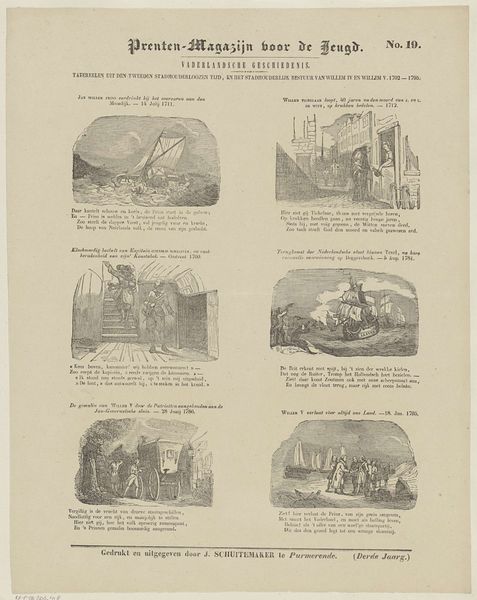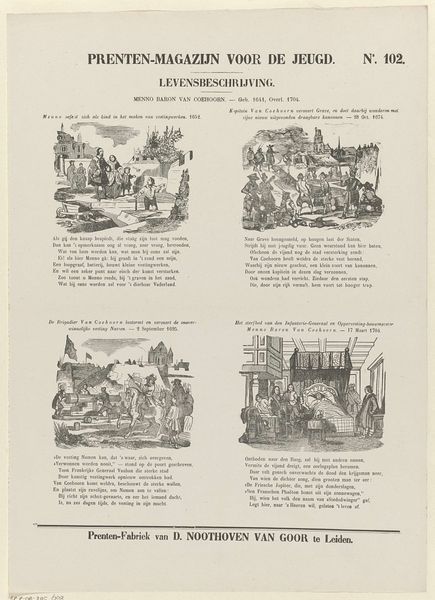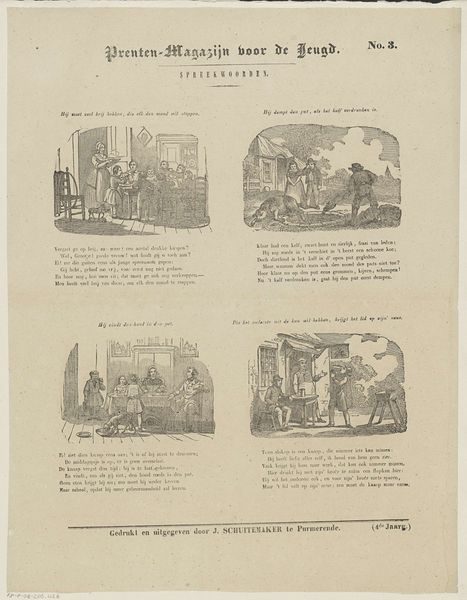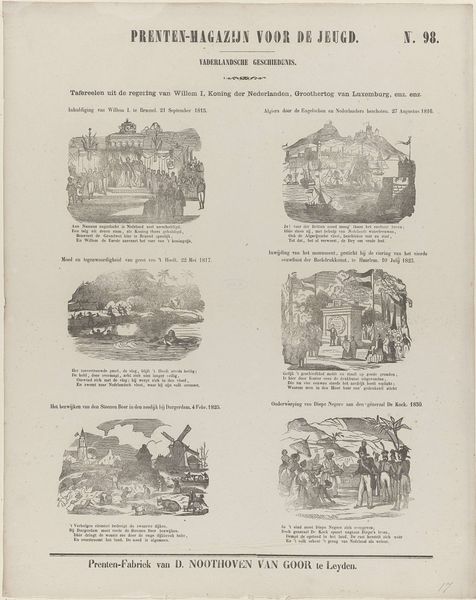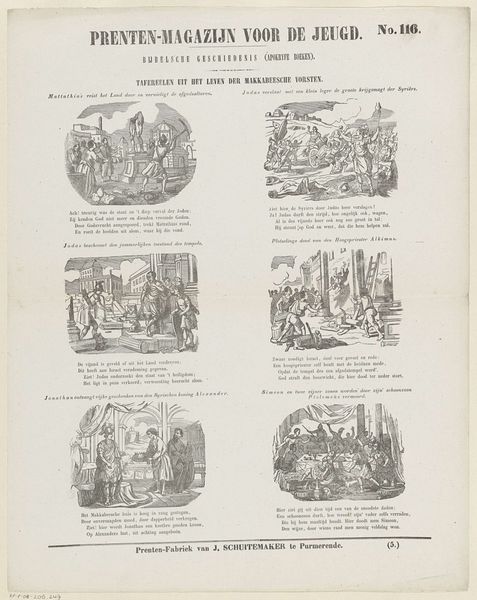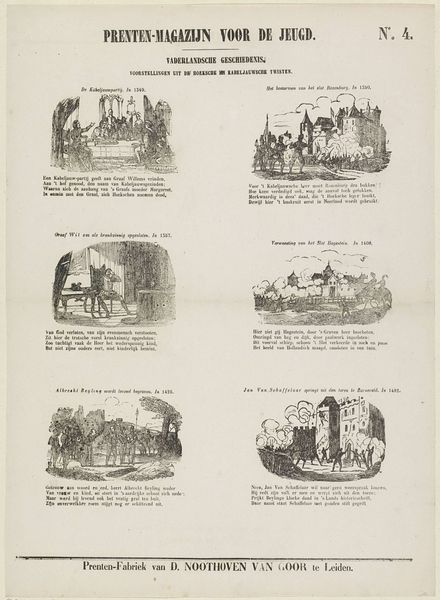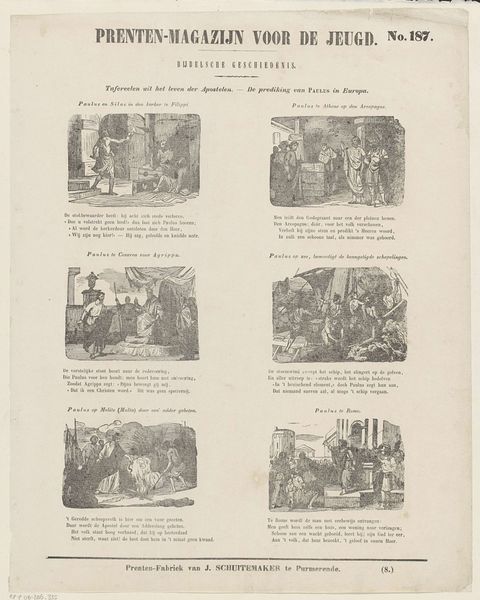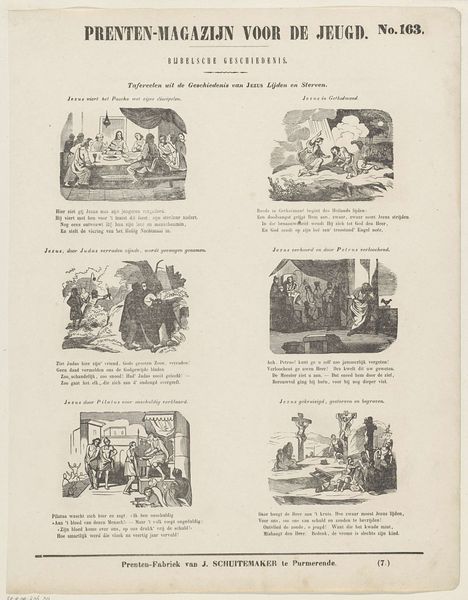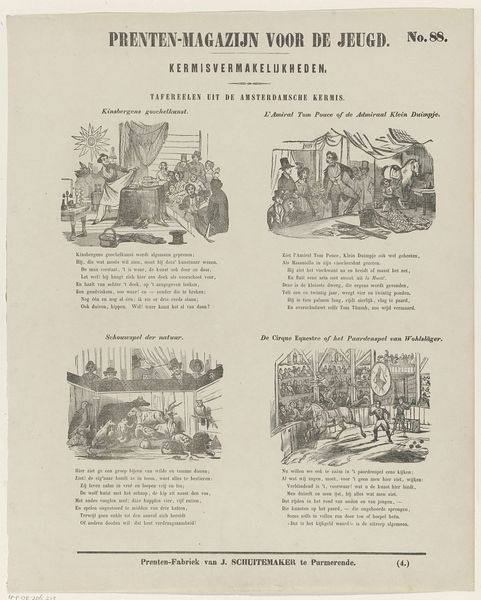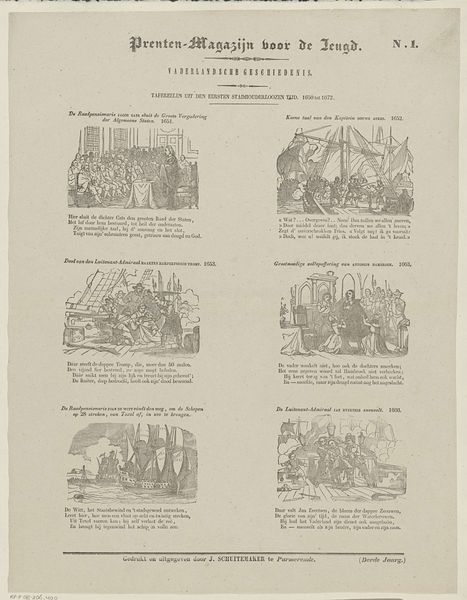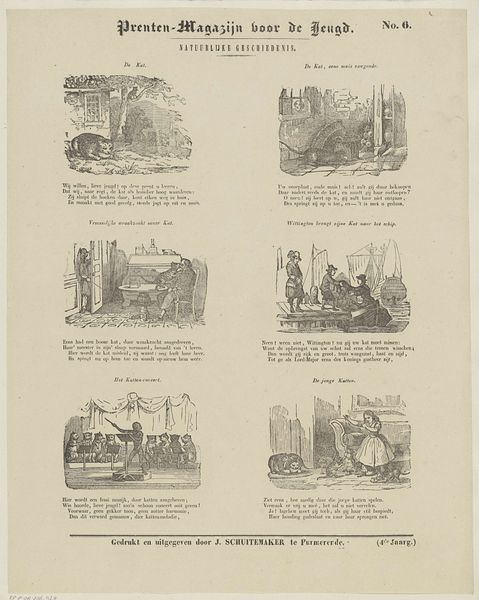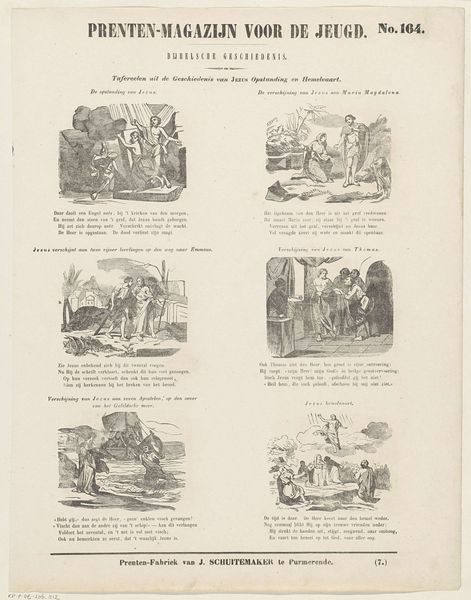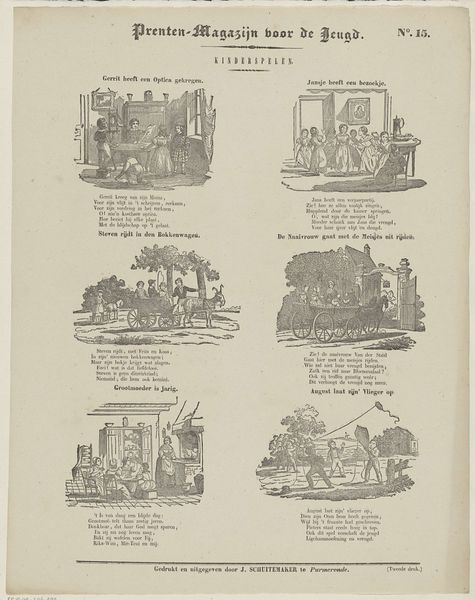
print, paper, engraving
#
dutch-golden-age
# print
#
old engraving style
#
paper
#
archive photography
#
personal sketchbook
#
historical photography
#
romanticism
#
history-painting
#
engraving
Dimensions: height 430 mm, width 336 mm
Copyright: Rijks Museum: Open Domain
Curator: This print, titled "Voorstellingen uit de Hoeksche en Kabeljaauwsche Twisten," was created by Jan Schuitemaker in 1842. It seems to depict various scenes from historical conflicts, rendered in engraving. My initial reaction is that it presents a fascinating array of small narratives, each framed with such crisp detail for such an old engraving. Editor: Yes, it certainly has a quaint, almost storybook feel. What strikes me is how this "Prenten-Magazijn voor de Jeugd," magazine for youth, normalizes power struggles for its young audience, turning what must have been wrenching socio-political clashes into a series of digestible scenes. Are they really trying to make the normal violence fun or at least entertaining? Curator: That’s a potent reading. But perhaps the intent was less about glorifying conflict and more about instilling a sense of national identity and civic education through these very tangible and accessible means. Note the uniformity in production — paper, print, accessible language. The work highlights dissemination as much as content, perhaps creating a shared visual vocabulary for a wide audience, thus producing patriotism itself as the primary commodity here. Editor: That's interesting, but even then, think about the kind of national identity being constructed here. These Hoeksche and Kabeljaauwsche Twisten, they were struggles within the ruling class, and mostly concerning the role of Holland versus other regions. In other words, a very elitist origin to the “shared culture.” It completely omits the struggles of the working class, their experiences of labor, or their role in society during these conflicts. So, the engraving reinforces an accepted hierarchy. Curator: It seems clear we’re not meant to engage in revolutionary sentiment, or reflect too deeply on the means by which we were introduced to a society. What stands out to me now, with this new frame, is the incredible intricacy, the labor put into each tiny figure, each building, all to perpetuate an incomplete, some would even say manipulative, rendering of society for profit. Editor: Right! By focusing on the final image and not, as you say, all of that often obscured labour, you are simply continuing this project's erasure and subtle violence! That labour underpins not only the engraving, but all social realities in society! Curator: A chilling perspective to consider the engraving process under that light.
Comments
No comments
Be the first to comment and join the conversation on the ultimate creative platform.
